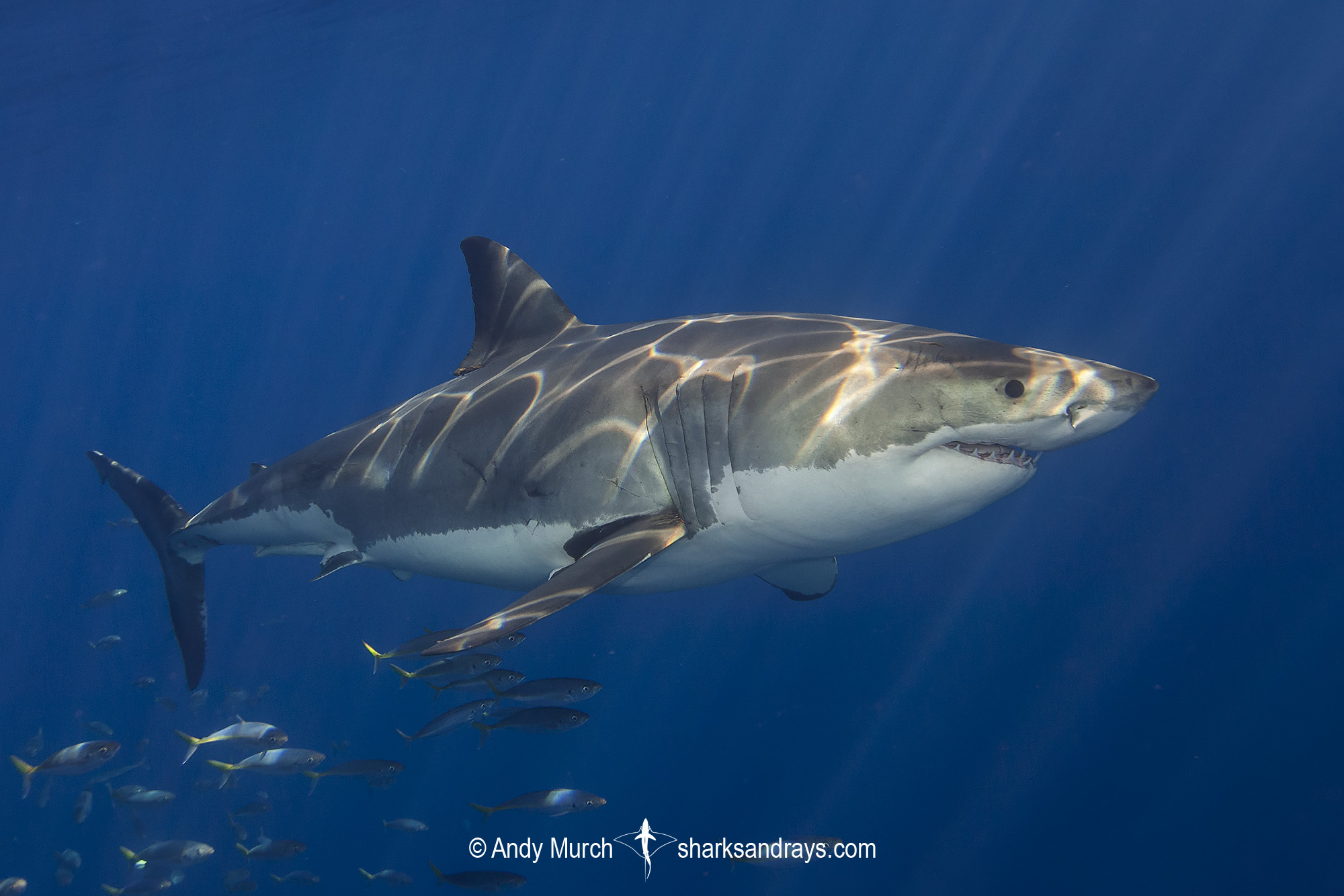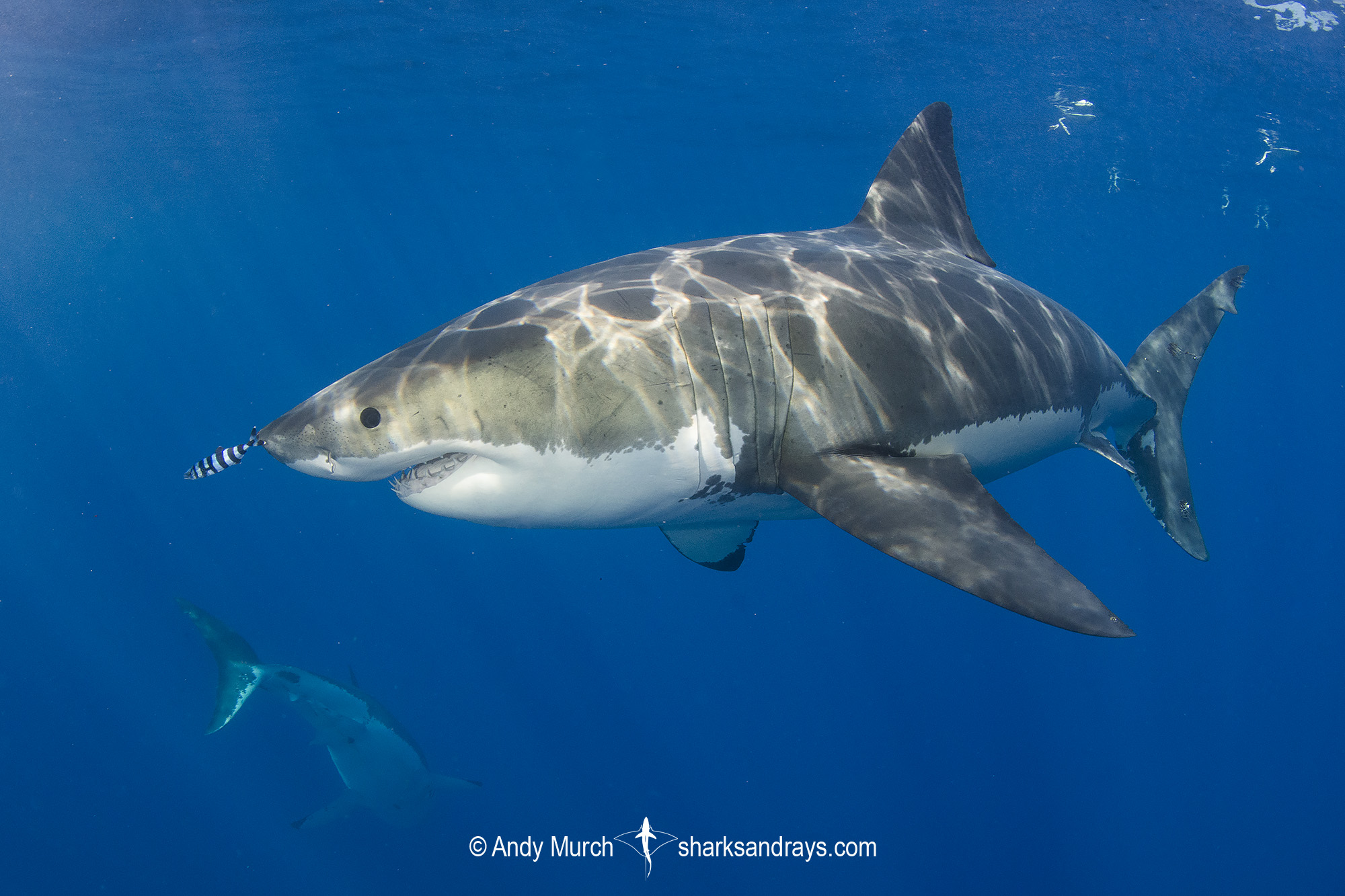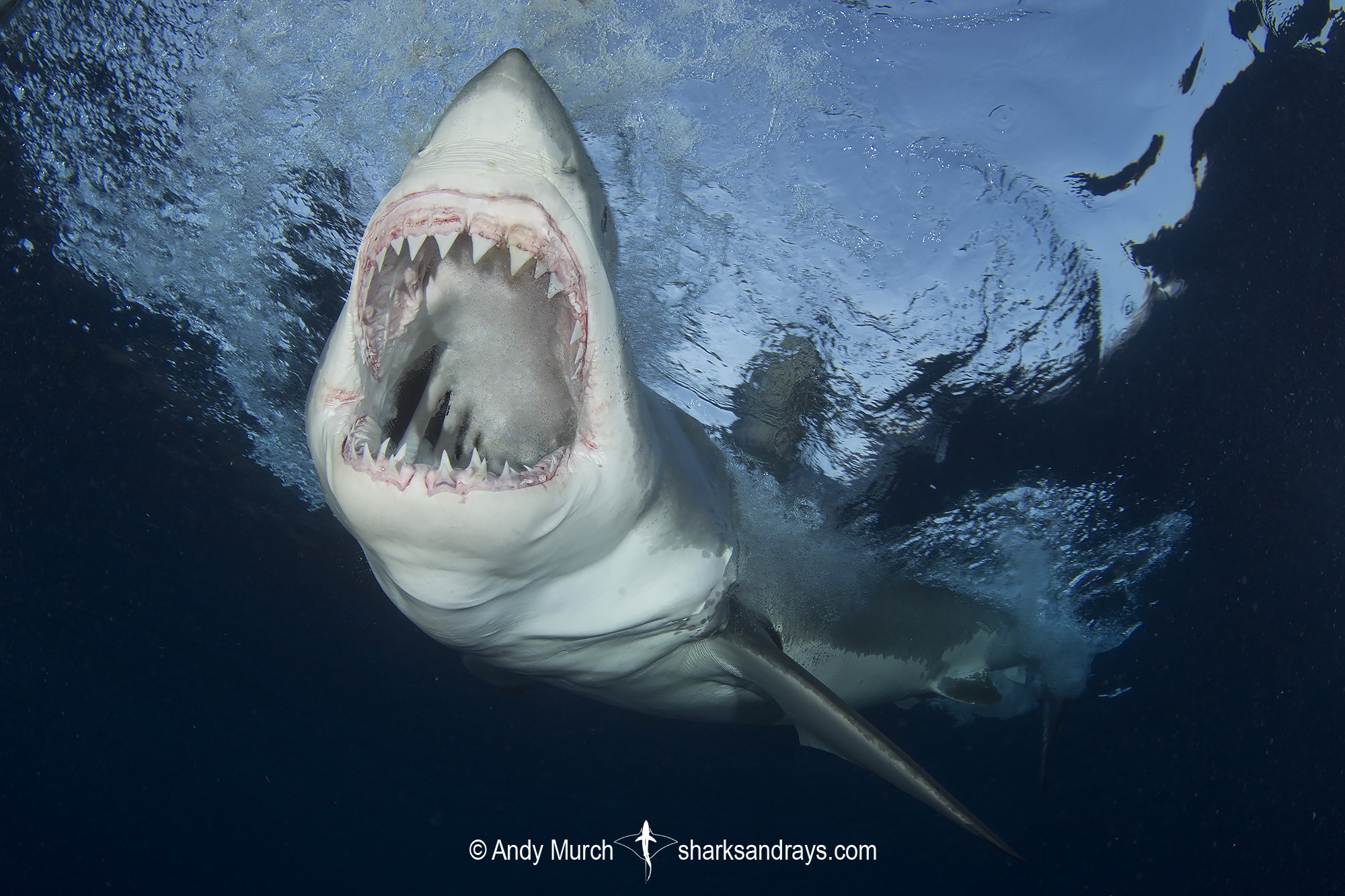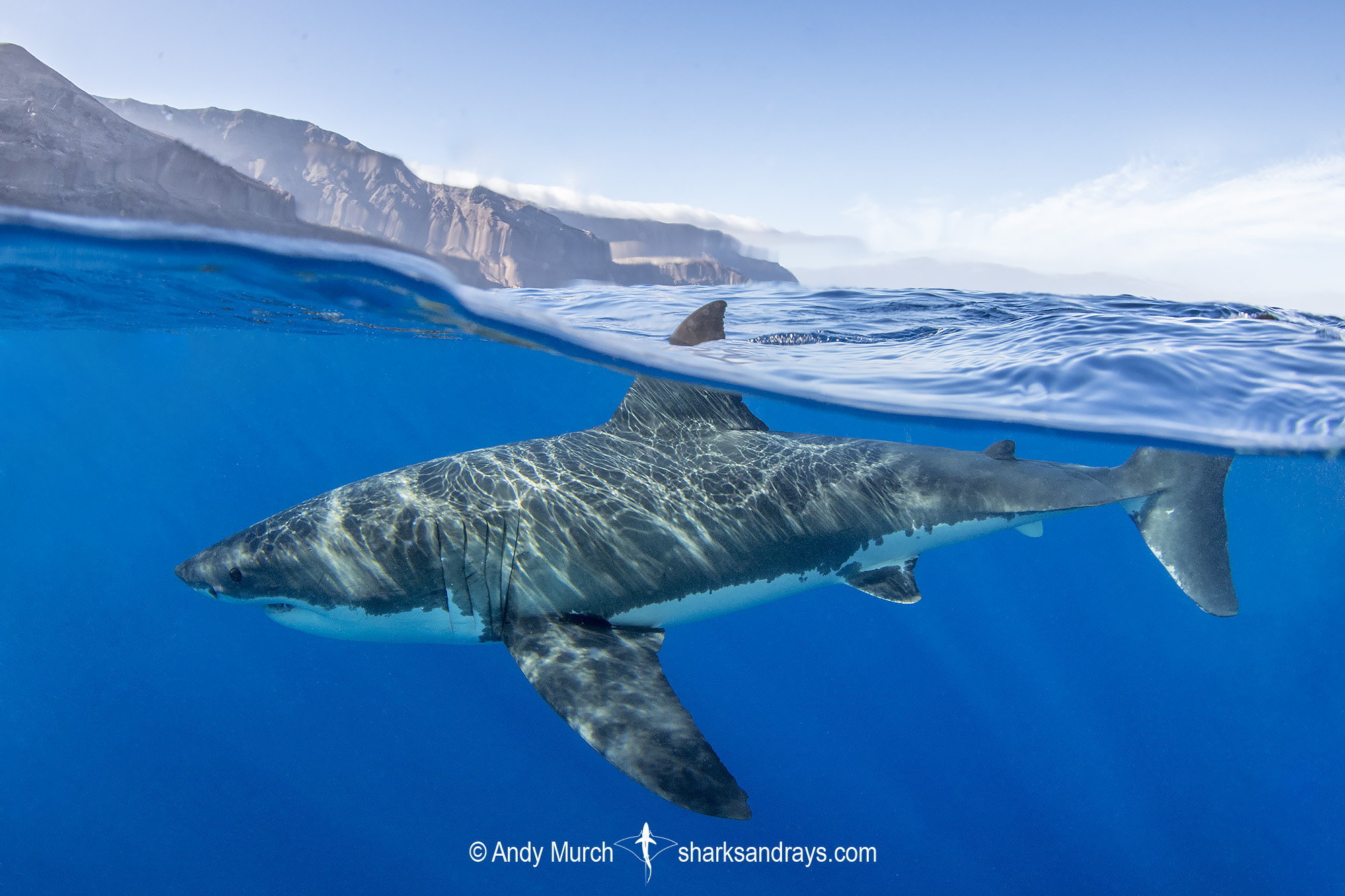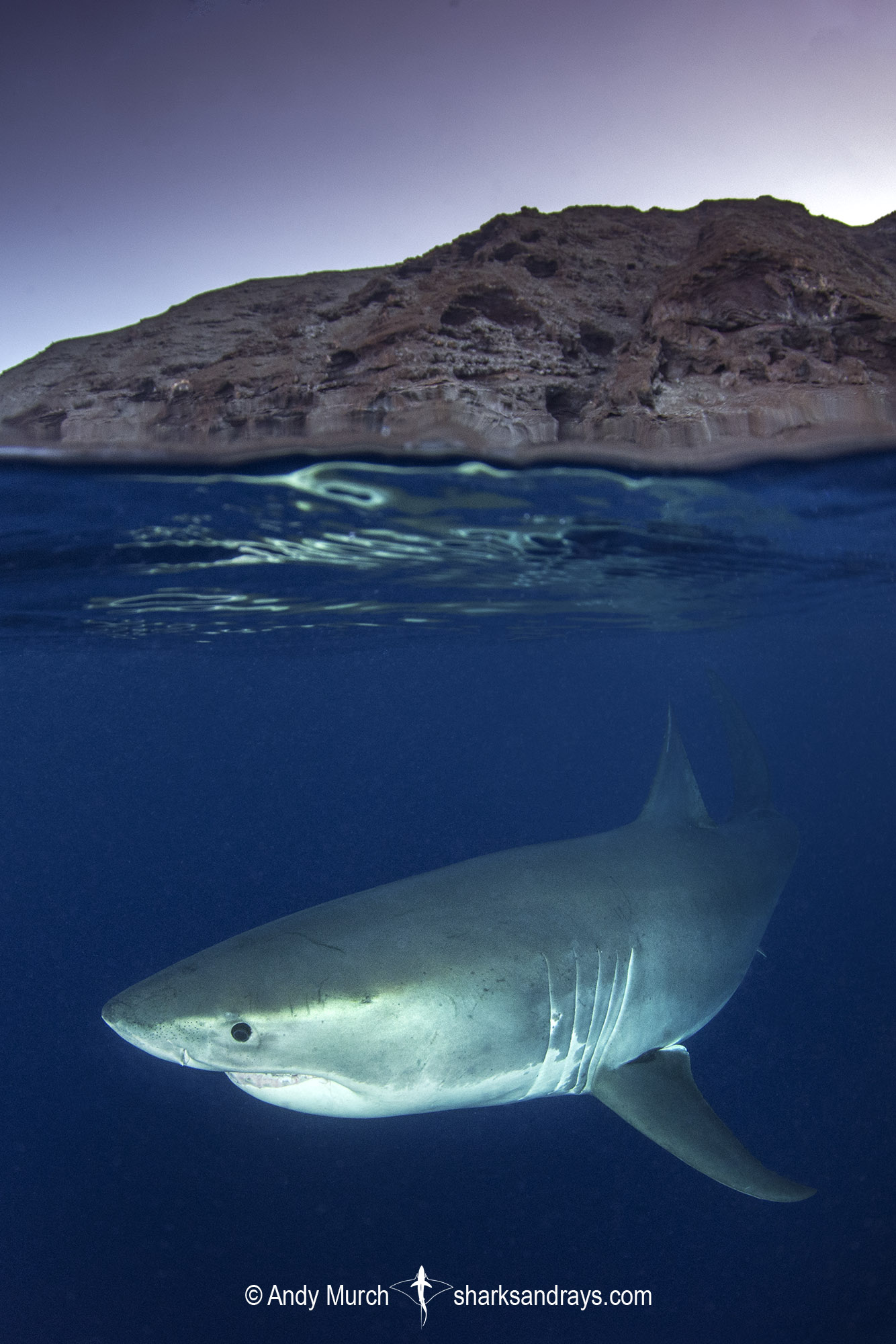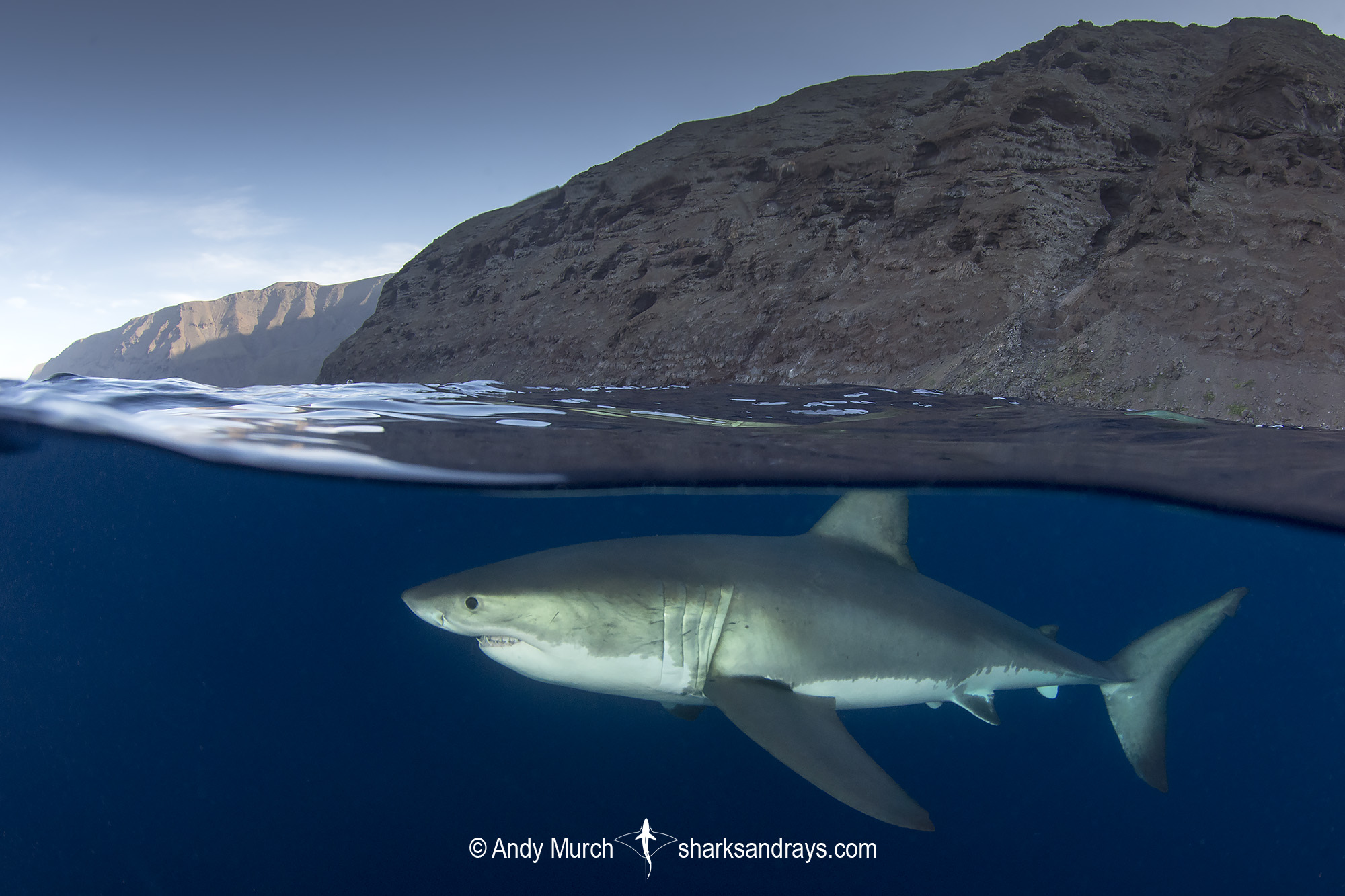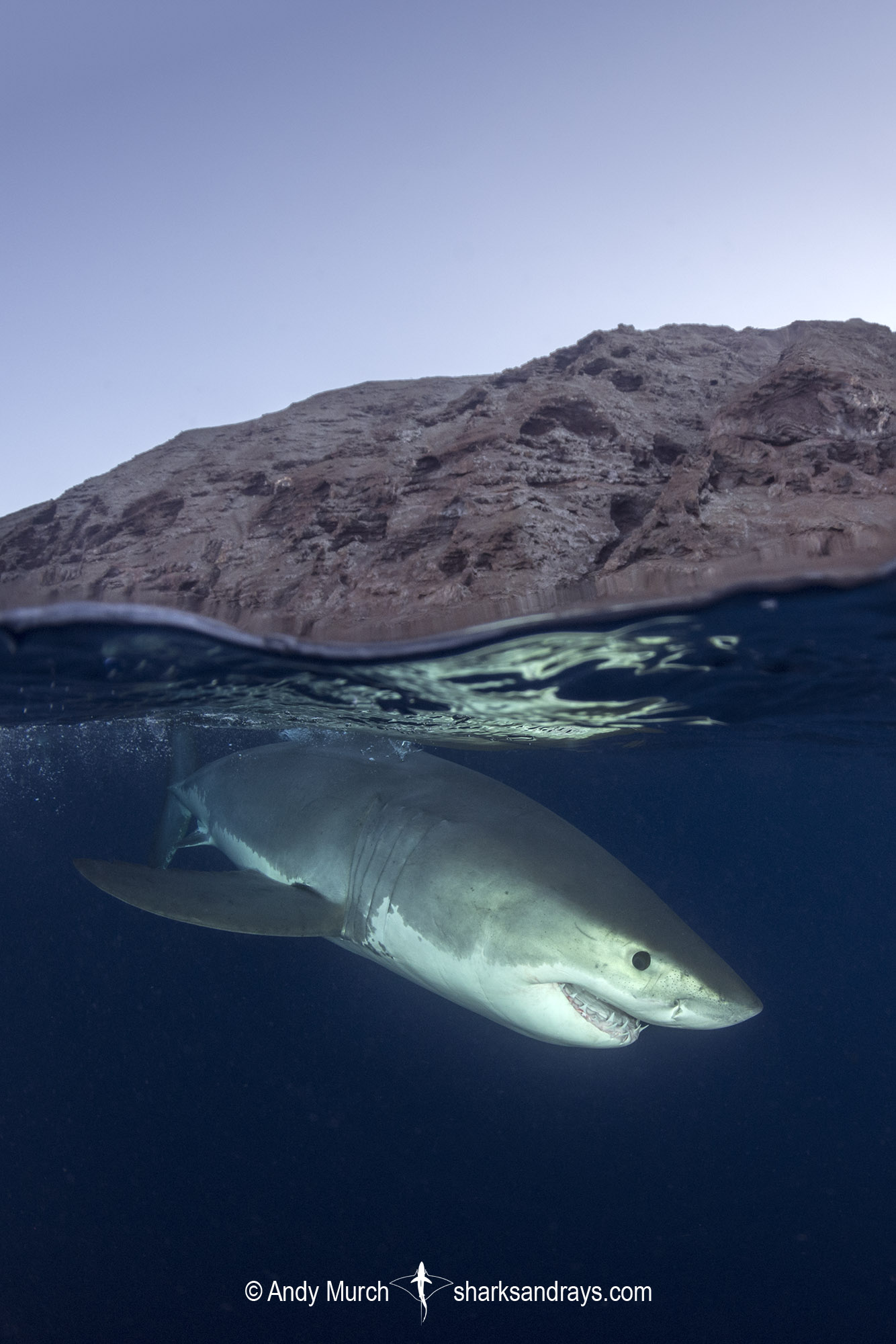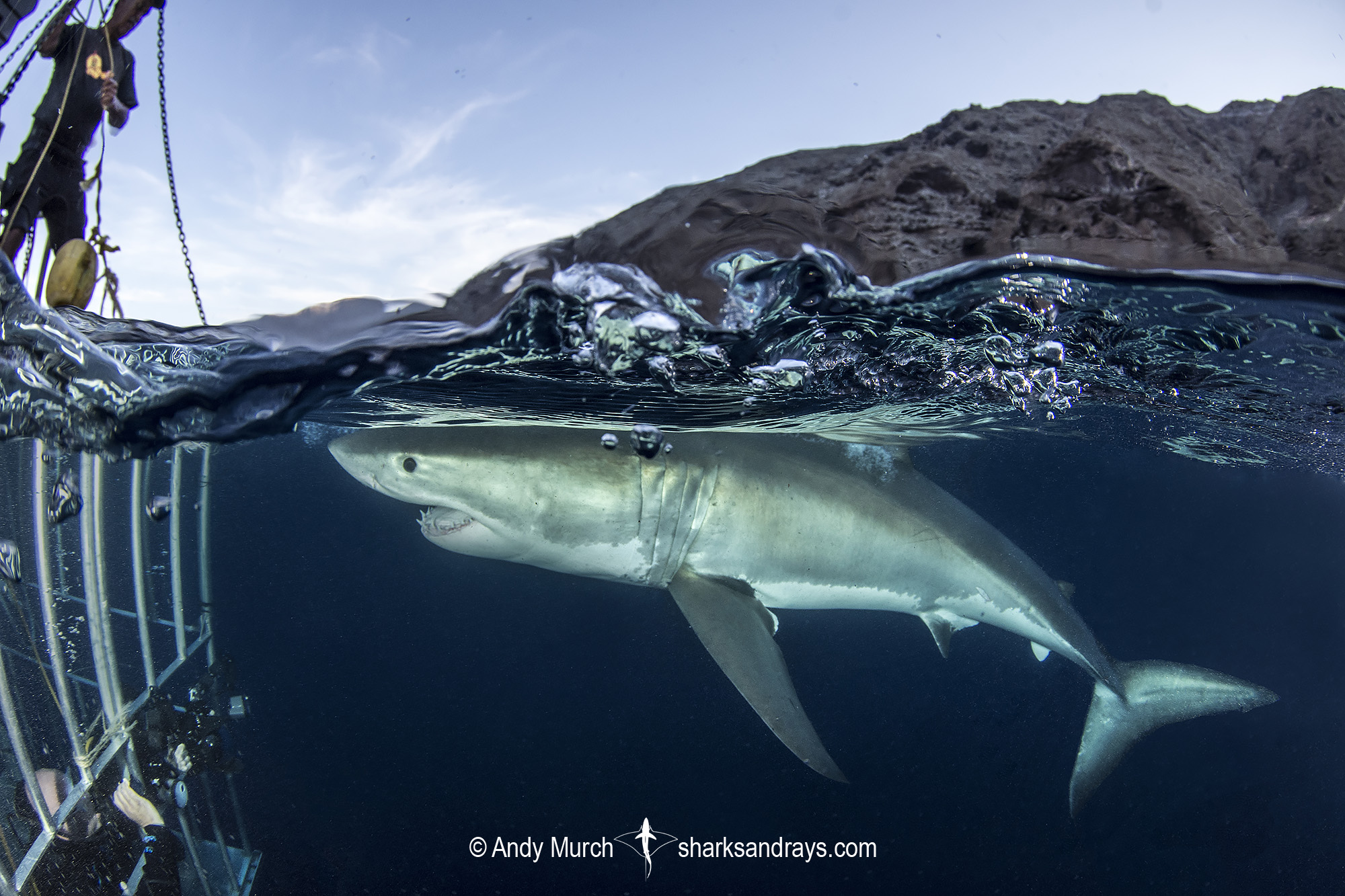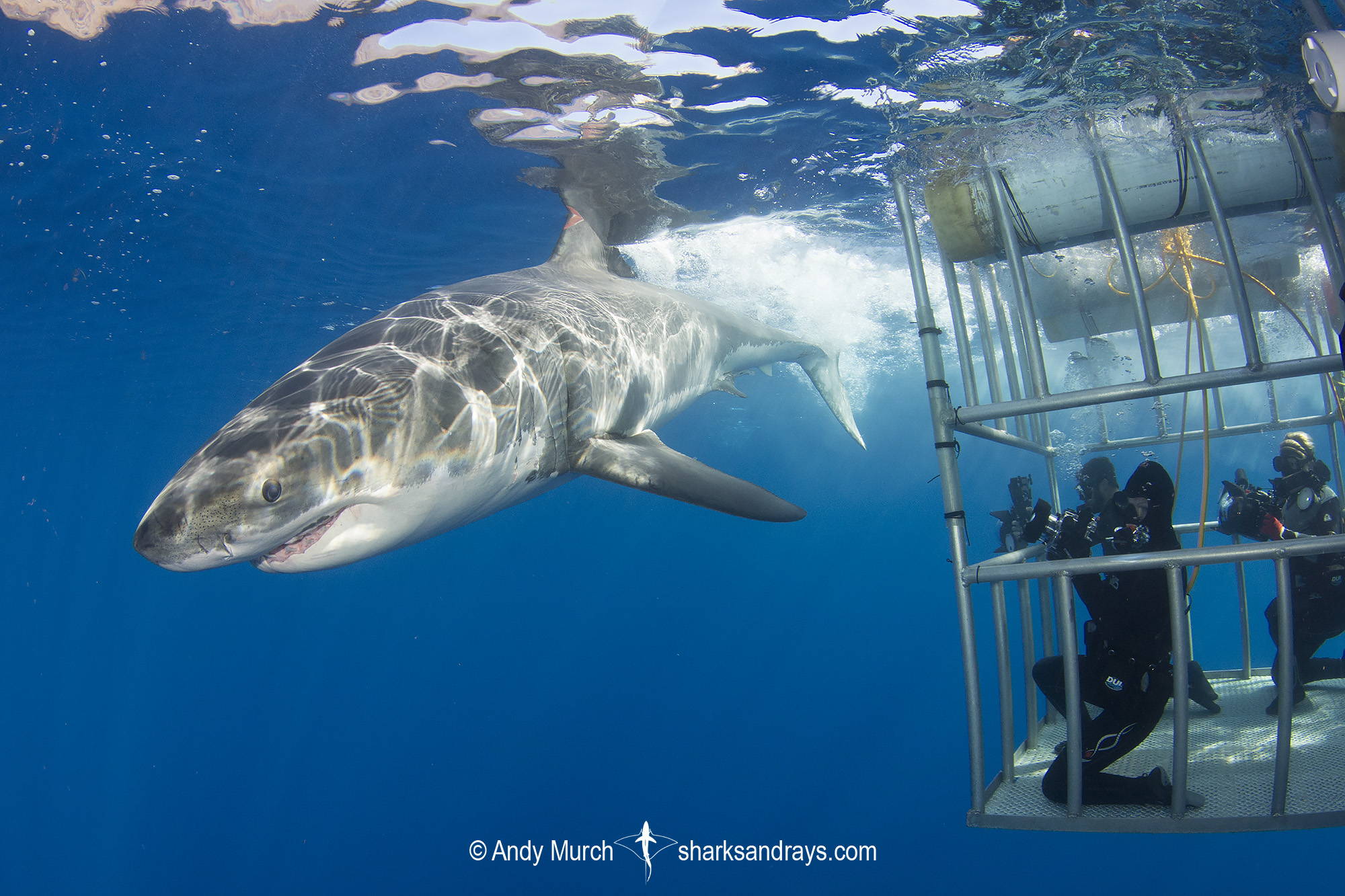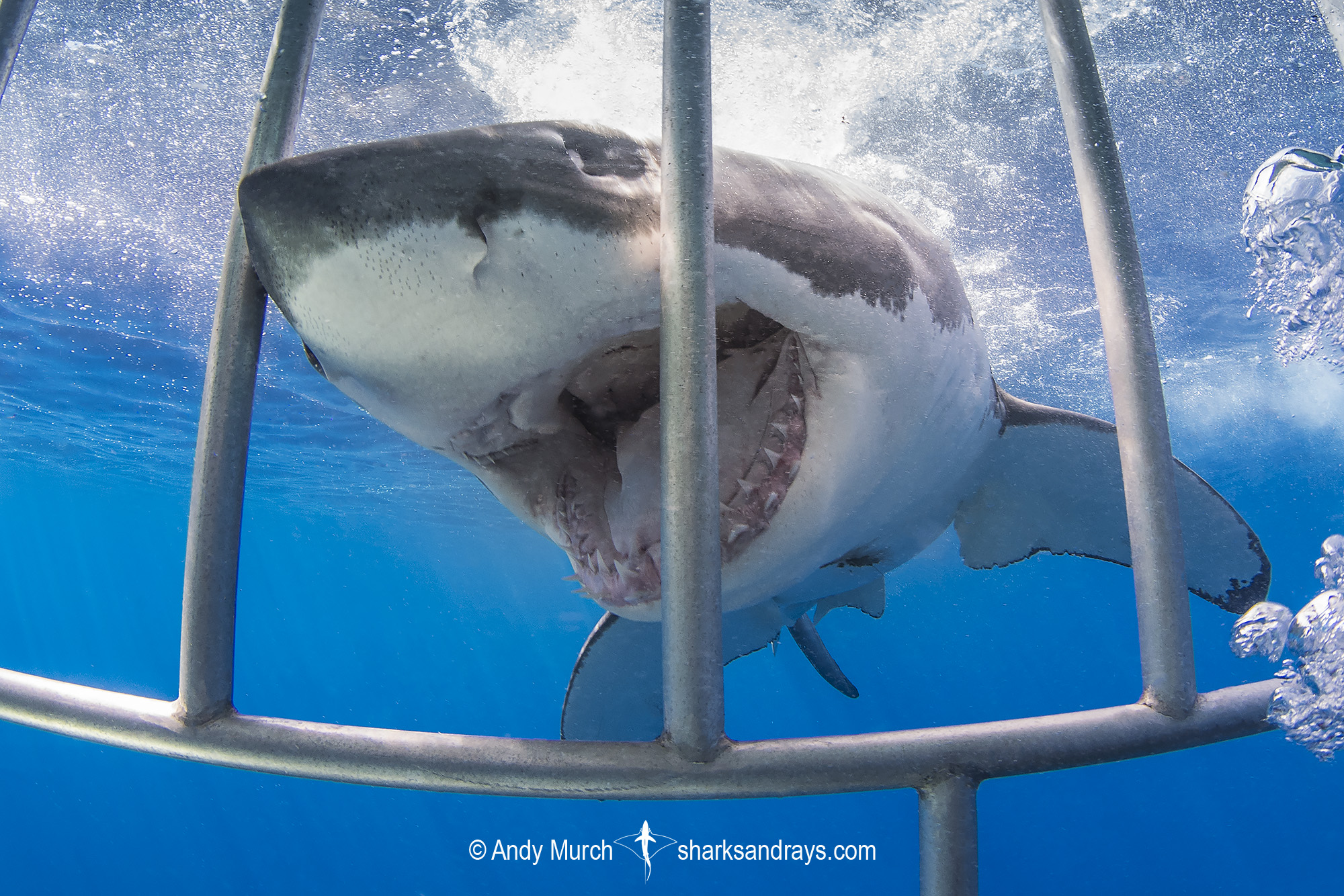Common name(s)
Great White Shark, White Pointer.
Binomial
Carcharodon carcharias.
Synonyms
Carcharias atwoodi, Carcharias lamia, Carcharias maso, Carcharias rondeletti, Carcharias verus, Carcharias vorax, Carcharias vulgaris, Carcharodon albimors, Carcharodon capensis, Carcharodon rondeletii, Carcharodon smithi, Carcharodon smithii, Carharodon carcharias, Squalus caninus, Squalus carcharias, Squalus lamia, Squalus lamia, Squalus vulgaris.
Identification
A very large, heavy bodied shark with a conical snout. Prominent keel on either side of caudal peduncle. Caudal fin large and lunate. Upper teeth broadly triangular; single cusp with fine serrations. Lower teeth narrower than top.
Dorsal coloration light grey, slate grey, or brownish-grey. Often with a small black blotch near the pectoral insertion. Irregular countershading line. Off-white ventrally.
Size
Maximum length about 6m. Numerous anecdotal accounts exist of larger white sharks but none have been accurately measured by scientists.

Conservation Status
VULNERABLE
The White Shark is not targeted for utilization, but the sub-populations in parts of South Africa and Australia are culled using drum lines and beach nets to intentionally lower the number of white sharks found around busy swimming beaches. White sharks are also a bycatch component in inshore longline, set line, gillnet, trawl, and rod and reel fisheries. Post-release survivorship in white sharks is generally high. Great white sharks are also vulnerable due to an extremely late age at maturity; around 33 years for females.
Since the implementation of protection measures in the 1990s, white shark populations in the Northeast Pacific and Indian Ocean appear to be increasing, but declines are still occurring in the Northwest Atlantic and South Pacific.
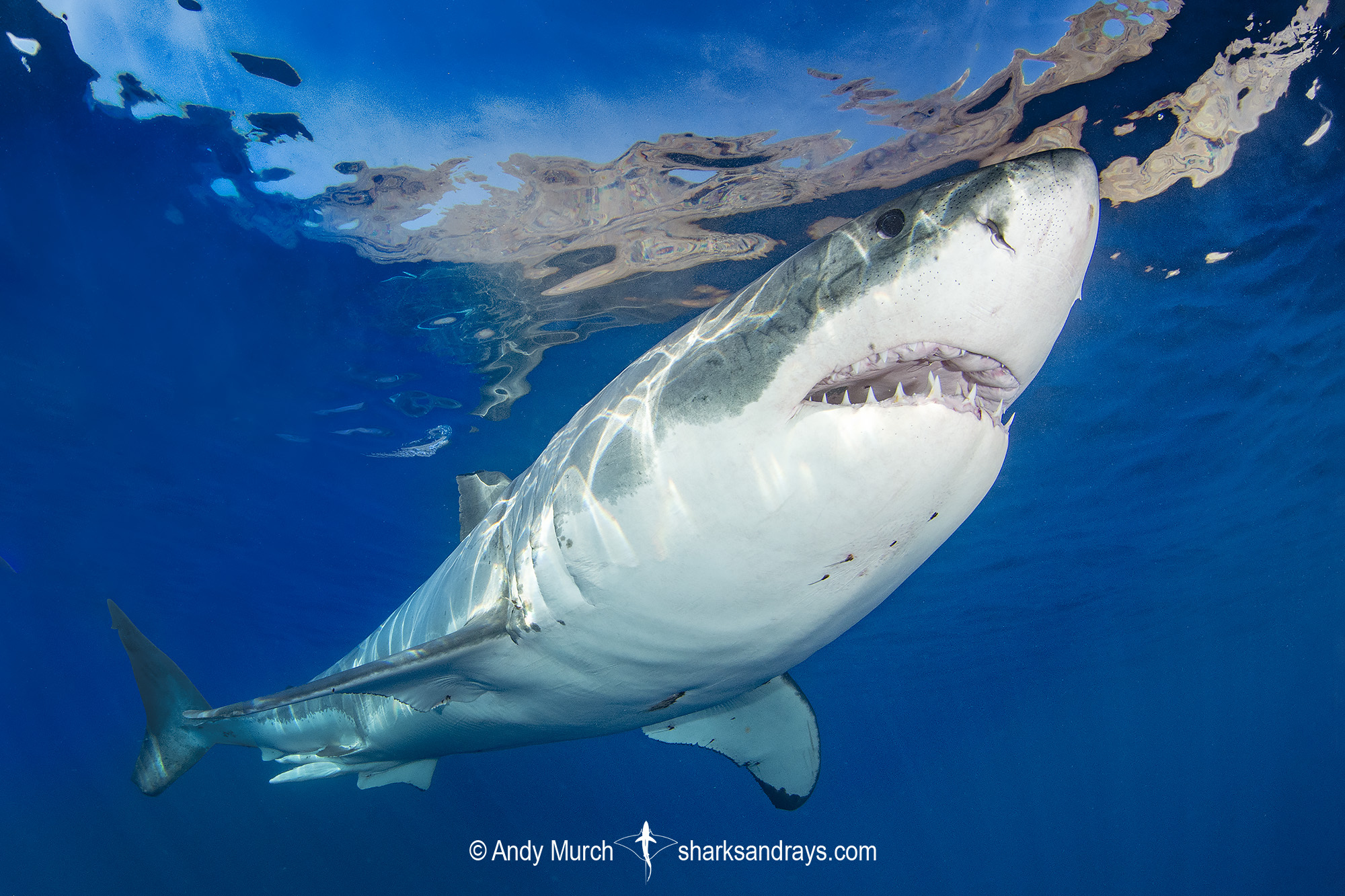
Habitat
Temperate and tropical seas but white sharks are far less common in the tropics. Often found inshore but also present in deep water off the continental shelf during long distance migrations. Surface to 1300m. Seasonal aggregations occur around pinniped colonies.
Distribution
Cosmopolitan around most temperate coastlines within the white shark’s preferred temperature range. Population density appears to be directly linked to the recovery or scarcity of pinnipeds.
Reproduction
A viviparous species without a placenta. Litter size 7-14.
Diet
Juvenile white sharks (less than 2m in length) mostly feed on bony fishes and small sharks. Larger white sharks predate on marine mammals, especially pinnipeds, and whale carcasses when available. Adult great whites will also take other sharks, and fishes.
Behavior
Great white sharks have a complex social structure involving size hierarchy. Similarly sized animals have been recorded swimming side by side to assess relative size, wherein the smaller animal will abandon captured prey to avoid conflict.
White sharks are known to undergo extremely long migrations e.g. between California and Hawaii, and between South Africa and Australia.
Reaction to divers
An extremely dangerous shark species that has been implicated in numerous, unprovoked, fatal attacks. When encountered on or around reefs, white sharks are generally cautious but may approach closely. If a white shark is spotted whilst on a normal dive it would be wise to leave the water at the first opportunity. White shark attacks are most common on divers that are spear fishing or near seal and sea lion colonies where attacks may be from misidentification.
In baited situations, white sharks are generally quite cautious but most will eventually come very close to the cage; sometimes even biting at the bars.
Some operators offer the opportunity for experienced divers to dive outside of the cage. Regardless of the presence of a safety diver, this is an extremely dangerous activity that is frowned upon by most other operators, and is illegal in most areas where white shark cage diving is available. As well as the danger to oneself, an attack will almost certainly have negative repercussions for the white sharks, and white shark tourism in that area.
Diving logistics
White sharks can be reliably encountered at a handful of places:
AUSTRALIA
Operators run multi-day liveaboard dive trips from Port Lincoln in South Australia to the Neptune Islands. Encounters are generally good for much of the year.
The most unique aspect of diving here is the submersible cage which (weather permitting) is lowered onto the sea floor, so the divers are able to enjoy the perspective of the sharks swimming towards them over the reef. Big Fish Expeditions runs Neptune Island Cage Diving Trips in April/May when the big female white sharks are in residence.
NEW ZEALAND
Great White cage diving trips take place at Stewart Island in the far south of the country.
MEXICO (CURRENTLY CLOSED BUT MAY EVENTUALLY RE-OPEN)
About a dozen liveaboard dive vessels run white shark cage diving trips to Guadalupe Island off the west coast of Baja, Mexico. Most boats leave from Ensenada.
The encounters are seasonal. Trips are usually offered between June and November although the sharks are there a bit longer.
Small males (3-4m) arrive first at the beginning of the season. The bigger females arrive in September. The visibility at Guadalupe is exceptional and the encounters are consistent. Most boats have surface cages for non-certified divers, and a submersible cage that is lowered to 10m for a different perspective.
USA
There are single day cage diving trips offered to the Farallon Islands in California. However, no one is allowed to chum for sharks so the encounters are very hit-and-miss.
On the east coast, great white sharks have starting returning to the grey seal colonies off New England since the grey seal numbers have rebounded. No chumming or cage diving is allowed in the area but anyone who decides to dive near the colony, should keep an eye out for large shapes in the mist!
CANADA
In Nova Scotia, at least one operator is now offering cage diving trips. Poor visibility and intermittent shark activity appear to be a problem in this area.
SOUTH AFRICA
Operators based in Simonstown used to visit Sea Island from June through September each year, but the white sharks disappeared in 2019 after some were attached by orcas. The lure of 70,000 cape fur seals will probably bring the sharks back eventually. Visitbility at Seal Island (and elsewhere in South Africa) is usually very green.
Seal Island was the best place to watch breeching great white sharks. The boats towed a decoy that the sharks attacked; often explosively jumping clear of the water in their attempts to incapacitate their prey.
Gansbaai is another area for cage diving in South Africa. Some operators drop their cages quite close to the coast, others take their guests to Dyer Island.
Similar species
Salmon Shark Distinguished by its shorter snout, stockier body, and second caudal keel below the first.
Porbeagle Shark Distinguished by its more pointed snout and second caudal keel.



